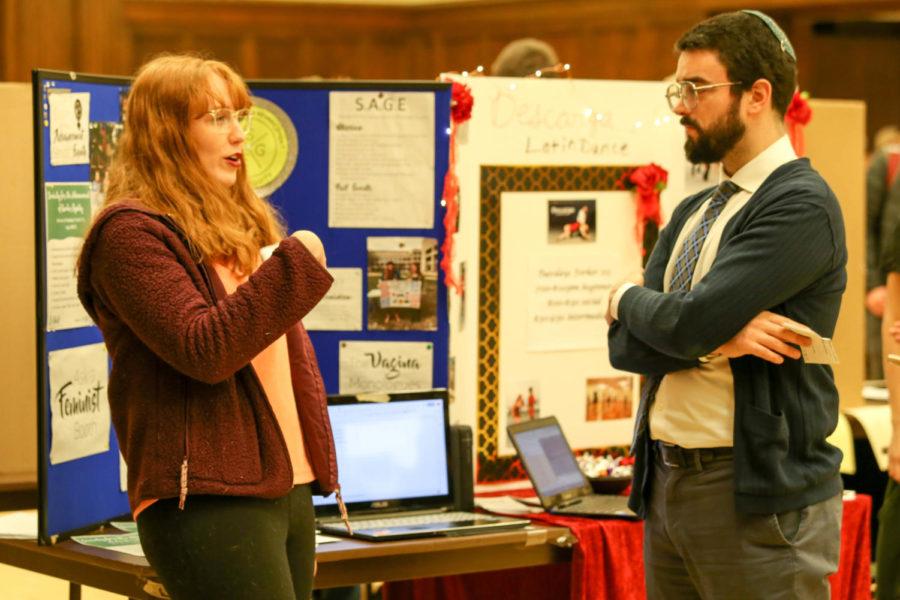An inside look at how to start a club at Iowa State
Danielle Peterson/Iowa State Daily
Polish Heritage Club and Baking Club are new student organizations that will attend ClubFest for the first time Wednesday.
March 10, 2022
Tables topped with tri-folds crowd the Memorial Union as hundreds of students explore an endless number of displays. Excited chatter fills the room, and dozens of pens fly across various club sign-up sheets. Yet for Sundar Shivraj, something is missing: an Escape Room Club.
Shivraj, a junior majoring in computer science, founded the Iowa State Escape Room Club in spring 2020 after noticing its absence as an incoming freshman.
“[Escape rooms are] a big passion of mine,” Shivraj said. “I knew it was a budding thing in bigger cities, but to my disappointment there was no Escape Room Club on campus.”
A club founder’s initial goal is to gain recognition. A club that is recognized as an official organization has access to university resources, can reserve meeting spaces on campus and may participate in ClubFest.
To begin the recognition process, a group must have a president, treasurer and adviser. Students fill the president and treasurer positions, but a faculty member must serve as the adviser.
“[Asking somebody to be your adviser] seems intimidating, but it’s just that you want to start something, and you want them to be part of that vision,” Shivraj said. “There’s a ton of staff members on campus, and there’s someone there who’s gonna be more than willing to help you put that idea out.”
The recognition process also requires at least five student signatures as proof of student interest.
While promoting the Escape Room Club, Shivraj texted friends, emailed people in his classes and shared by word of mouth. He also asked others to help him network.
“If someone said ‘no,’ I would tell them okay, well can you tell other people you think would be interested?” Shivraj said. “Can you keep this on your radar in case you find somebody else you think would be a good fit?”
Once the founding members are in place, students must compose a constitution and operations manual.
The constitution is the governing document of an organization that may include rules about elections, member eligibility and expectation guidelines.
The operations manual acts as a complementary document. It is broader than the constitution and should outline the daily functions of an organization.
“I think the easiest way to go about it is to find a club that’s pretty similar to yours in respect to scope, and just take their constitution and make your changes to it,” Shivraj said.
When the constitution and operations manual are approved, students must wait for final review and approval. This process can be timely, depending on the number of clubs attempting recognition.
On average, students create 15-30 new clubs each semester.
“We want to help students with the process, but there are other students who are also trying to do the same thing as you, and we have to work through it in a certain order,” said Kevin Merrill, assistant director for student organizations.
Many students create clubs to share their passions with others, but the process can also benefit students professionally.
“I can’t tell you how many times at a career fair people have seen that I’m the founder and president of a club and they go ‘explain that to me,” Shivraj said. “It’s a very big deal to be able to put that on a resume and say you built something from the ground up.”
Ella Rekow, a sophomore majoring in software engineering, recently formed a Girls Who Code club that is waiting for final approval.
“There are very little opportunities for tech specific girls, which is really sad, but there are so many people who already are feeling the benefits from [the club],” Rekow said.
For more information on the club recognition process, visit the Student Engagement website or contact the Student Organizations email at stuorgs@iastate.edu.







